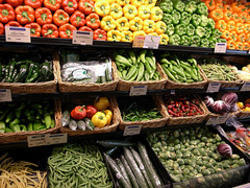After the Sept. 11 terrorist attacks, President George W. Bush vowed to draw a protective shield around the U.S. food supply and defend it from farm to fork.
Garance Burke of the Associated Press reports the government has spent at least $3.4 billion on food counter-terrorism in the last decade, but key programs have been bogged down in a huge, multi-headed bureaucracy. And with no single agency in charge, officials acknowledge it’s impossible to measure whether orchards or feedlots are actually any safer.
On Tuesday, a Senate subcommittee will hold a hearing to examine a congressional watchdog’s new report revealing federal setbacks in protecting cattle and crops since Sept. 11. Just days after  the 10th anniversary of the attacks, lawmakers are demanding answers about potential food-related threats and reports that the government could have wasted money on languishing agriculture anti-terror programs.
the 10th anniversary of the attacks, lawmakers are demanding answers about potential food-related threats and reports that the government could have wasted money on languishing agriculture anti-terror programs.
John Hoffman, a former senior adviser for bio-surveillance and food defense at the Department of Homeland Security, who will testify at the hearing, said, "The truth is, nobody’s in charge. Our surveillance doesn’t work yet, our intelligence doesn’t work yet and we’re not doing so well at targeting what comes across the border."
Top U.S. food defense authorities insist that the initiatives have made the food supply safer and say extensive investments have prepared the country to respond to emergencies. No terrorist group has threatened the food supply in the past decade, and the largest food poisonings have not arisen from foreign attacks, but from salmonella-tainted eggs produced on Iowa farms that sickened almost 2,000 people.
Seeking to chart the government’s advances, the AP interviewed dozens of current and former state and federal officials and analyzed spending and program records for major food defense initiatives, and found:
— The fragmented system leaves no single agency accountable, at times slowing progress and blurring the lines of responsibility. Federal auditors found one Agriculture Department surveillance program to test for chemical, biological, and radiological agents was not working properly five years after its inception in part because agencies couldn’t agree on who was in control.
— Congress is questioning whether $31 million the Department of Homeland Security spent to create a state-of-the-art database to monitor the food supply has accomplished anything because agencies are not using it to share information.
— Despite the billions spent on food defense, many of the changes the government put into place are recommendations that the private sector isn’t required to carry out. As a result, it’s difficult to track successes and failures, and the system’s accomplishments are largely hidden from public view.
"Everything that has been done to date on food defense in the private sector has all been voluntary," said LeeAnne Jackson, the Food and Drug Administration’s health science policy advisor. "We can’t go out and ask them what they have done, because they’re not obliged to tell us, so we don’t have a good metric to measure what’s been done."
